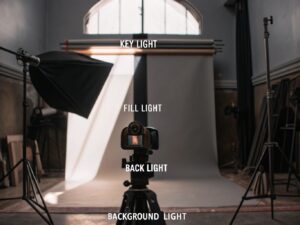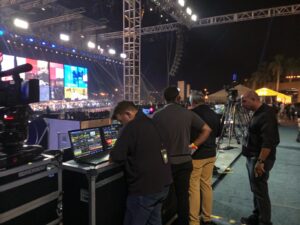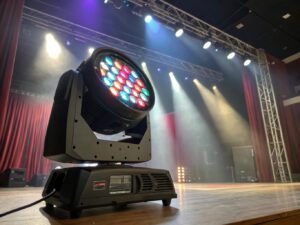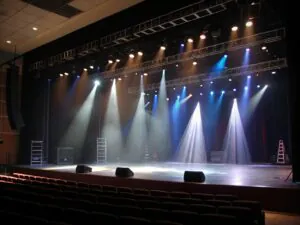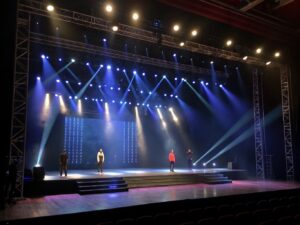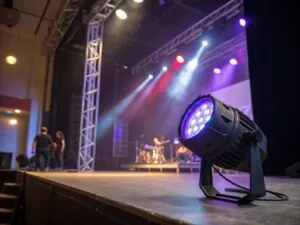
How Can an RGBW Outdoor Wall Wash Light Elevate Your Design?
Is your building's exterior lighting limited to a single, static color? This makes your architecture invisible after dusk or look bland and uninspired. You're missing a huge opportunity to create a dynamic visual statement1.
An RGBW outdoor wall wash light is a powerful, weather-resistant fixture that combines Red, Green, and Blue LEDs with a dedicated White LED. This allows you to paint surfaces with millions of vibrant colors or illuminate them with a pure, high-quality white light.

I've worked with lighting for 19 years, and the move to high-quality RGBW fixtures2 for outdoor use has been one of the biggest leaps in creative freedom. Before, you had to choose: static white light or colored gels on inefficient lamps. Now, with a single fixture, a technician can offer a client endless possibilities. A building can have a classic, elegant white look for daily use, then instantly transform with team colors for a big game, or festive colors for a holiday. It gives you, the technician, an incredible palette to work with.
What does RGBW stand for in LED lights?
You see the term RGBW on spec sheets, but what does that extra "W" really mean for your light output? Choosing a simple RGB fixture can leave you with a weak, unappealing white.
RGBW stands for Red, Green, Blue, and White. It's a 4-in-1 LED system where a dedicated white LED chip is added alongside the three primary colors. This delivers a much purer and more powerful white than you can get from mixing colors.
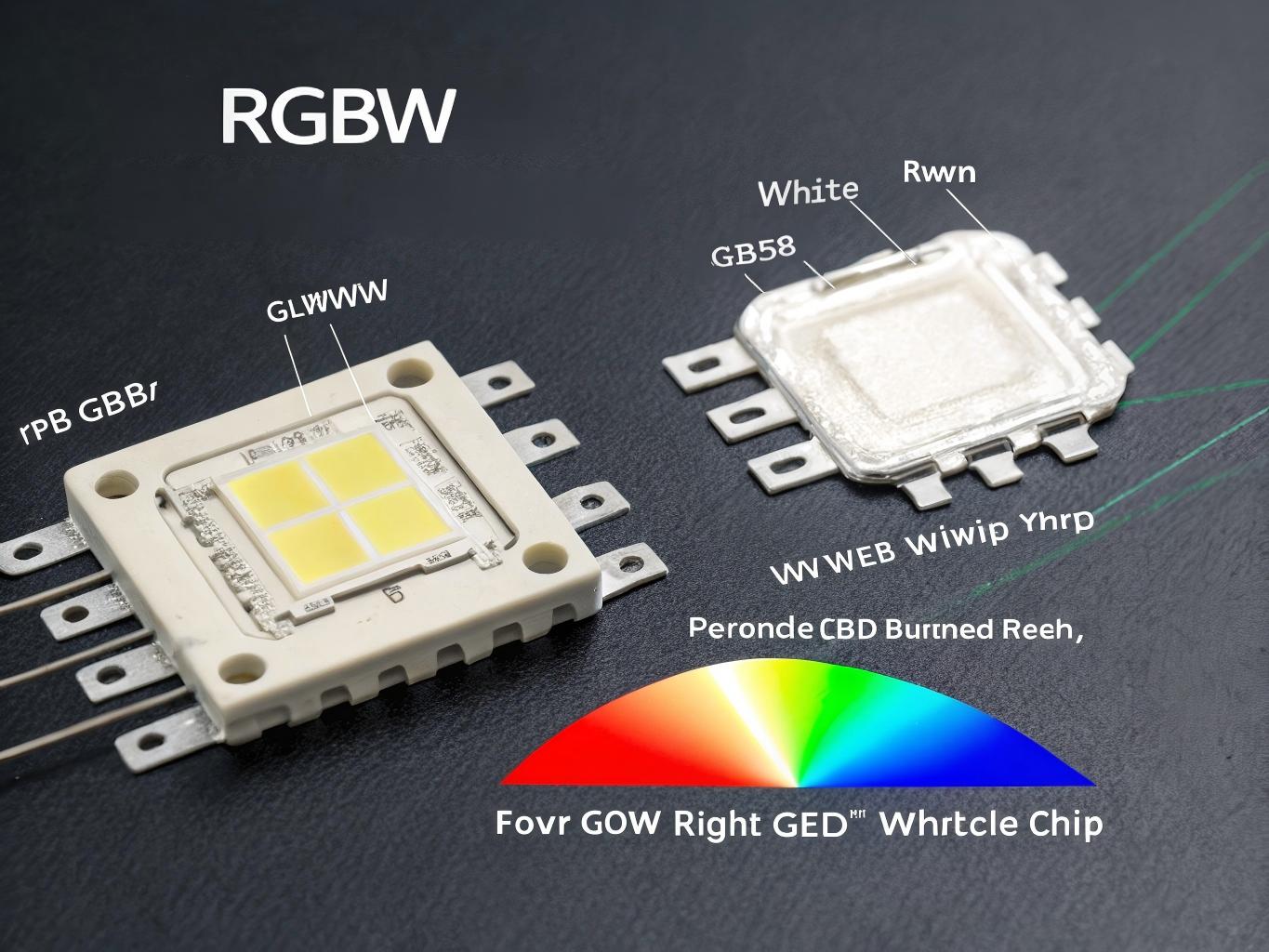
The "W" is a game-changer. A standard RGB fixture creates white light by mixing red, green, and blue at full power. The problem is that this mixed "RGB white" often looks unnatural. It can have a purplish or pastel tint and is not very bright. In my experience, it's never a clean, crisp white. An RGBW fixture solves this completely. By including a dedicated white diode right in the LED engine, you get a true white light when you need it. At Monalight, our wall washers are designed this way because we know our clients need that flexibility. You can run a stunning saturated color show, and then with one DMX command, switch to a beautiful, brilliant architectural white. This single feature dramatically increases the value and versatility of the fixture.
RGB White vs. RGBW White
| Feature | RGB-Mixed White | Dedicated White (in RGBW) |
|---|---|---|
| Color Quality | Often pasty, with a purple/blue tint. | Pure, clean white light. |
| Brightness | Less efficient, appears dimmer. | Brighter and more punchy. |
| Versatility | Poor for architectural white lighting. | Excellent for both vibrant color & pristine white. |
| Professionalism | Looks amateur for white-light applications. | The professional standard for versatile fixtures. |
What is the difference between RGBW and RGBWW LED lights?
You've mastered RGBW, but now you see "RGBWW" on some fixtures. Is this just marketing, or is there a functional difference that impacts your design choices?
The difference is the number of white chips. RGBW has one white (usually Cool White). RGBWW adds a second white chip, giving you both a Warm White and a Cool White channel (sometimes called RGBCW), allowing for tunable white temperatures.
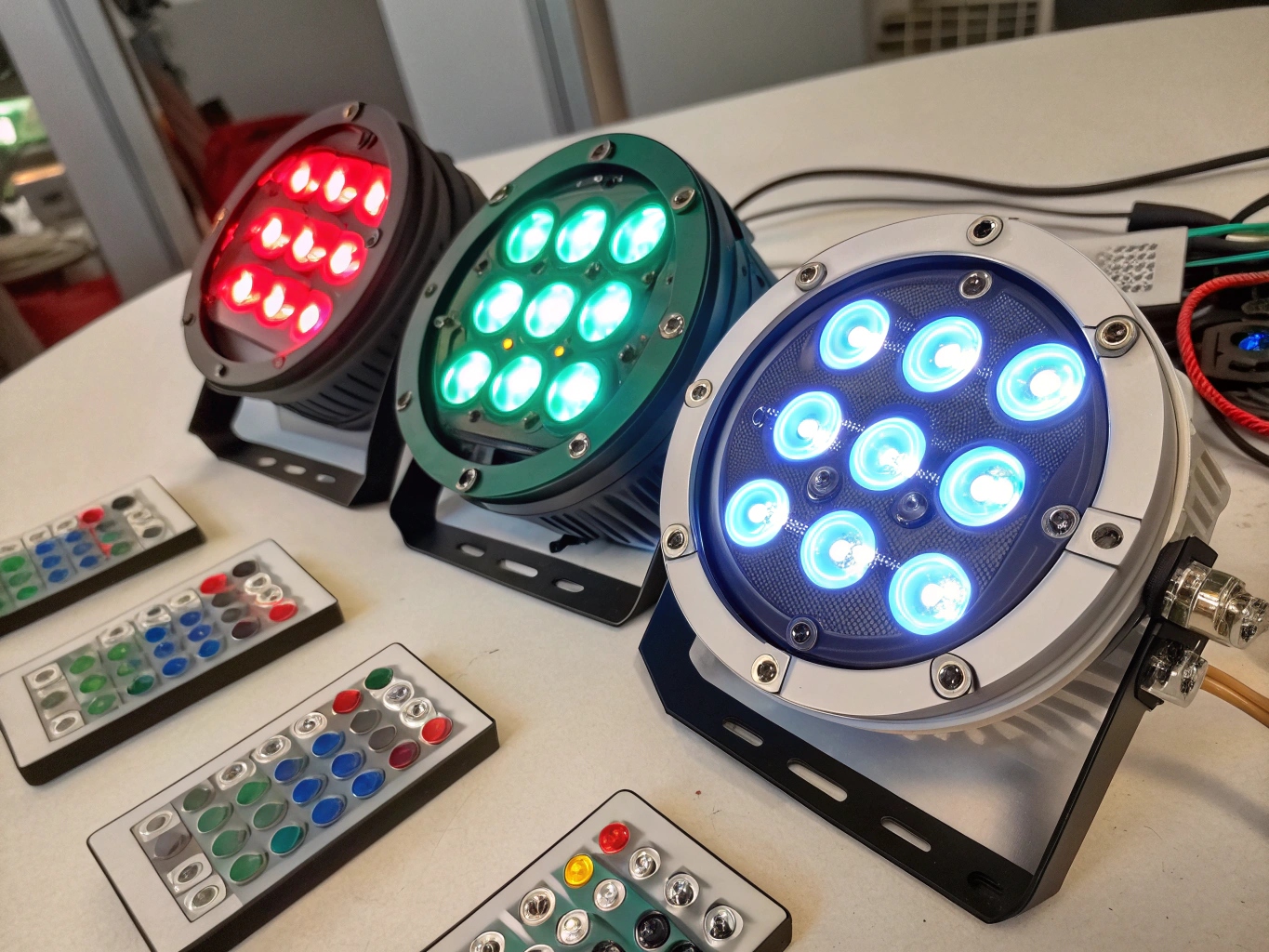
This is a detail that skilled technicians like Nick truly appreciate. An RGBW fixture gives you great colors and a solid white, but you are locked into the color temperature3 of that one white chip, which is often a cooler 6000K white. An RGBWW (or RGBCW) fixture is the ultimate tool for flexibility. With separate DMX channels for both a warm white (around 3000K) and a cool white (around 6000K) LED, you can mix them. This means you can create any shade of white you want, from a cozy, warm candlelight glow to a stark, modern, pure white, and anything in between. Imagine lighting a historic building. You could give it a warm, inviting look for a wedding, then a crisp neutral white for a corporate event the next day, all from the same lights. This tunable white capability is a premium feature that makes a fixture incredibly powerful.
RGBW vs. RGBWW (RGBCW)
| Fixture Type | White Channels | Key Feature | Best For |
|---|---|---|---|
| RGBW | 1 (e.g., Cool White) | Pure white + full color. | Projects needing good color and a single, static shade of white. |
| RGBWW | 2 (Warm + Cool) | Tunable white + full color. | Projects demanding total flexibility in white light temperature. |
What is the difference between an LED strip and a wall washer?
You need to light a large outdoor wall. Is a cheaper LED strip a viable option, or do you need to invest in a purpose-built wall washer?
The difference is optics, power, and durability. A wall washer is a powerful instrument with engineered lenses to throw an even sheet of light. An LED strip is a low-power, flexible accent light with no projection optics.

Using an LED strip to do a wall washer's job is a common mistake that always leads to disappointment. I've been called in to fix these kinds of jobs. An RGBW LED strip has bare LEDs on a flexible board. It's designed to glow and is perfect for small accents like cove lighting. But try to light a 30-foot wall with it, and the light will be weak, splotchy, and uneven. An RGBW outdoor wall washer is a completely different class of tool. It has high-power LEDs that mix the color at the source. Then, it uses a series of precision lenses to gather that light and project it smoothly and evenly across a huge surface. Furthermore, our wall washers at Monalight have robust, IP67-rated aluminum housings4. They are built to dissipate heat and survive years of rain, sun, and temperature changes. A simple LED strip would fail in weeks in the same environment.
What is the difference between RGBW and RGBIC?
You've started seeing "RGBIC" advertised, especially on consumer products. How does this technology compare to the professional RGBW fixtures you rely on for your jobs?
RGBW fixtures are controlled as a single unit; the entire light is one color at a time. RGBIC (Independent Control) allows a single strip to display multiple colors simultaneously by controlling different sections independently.
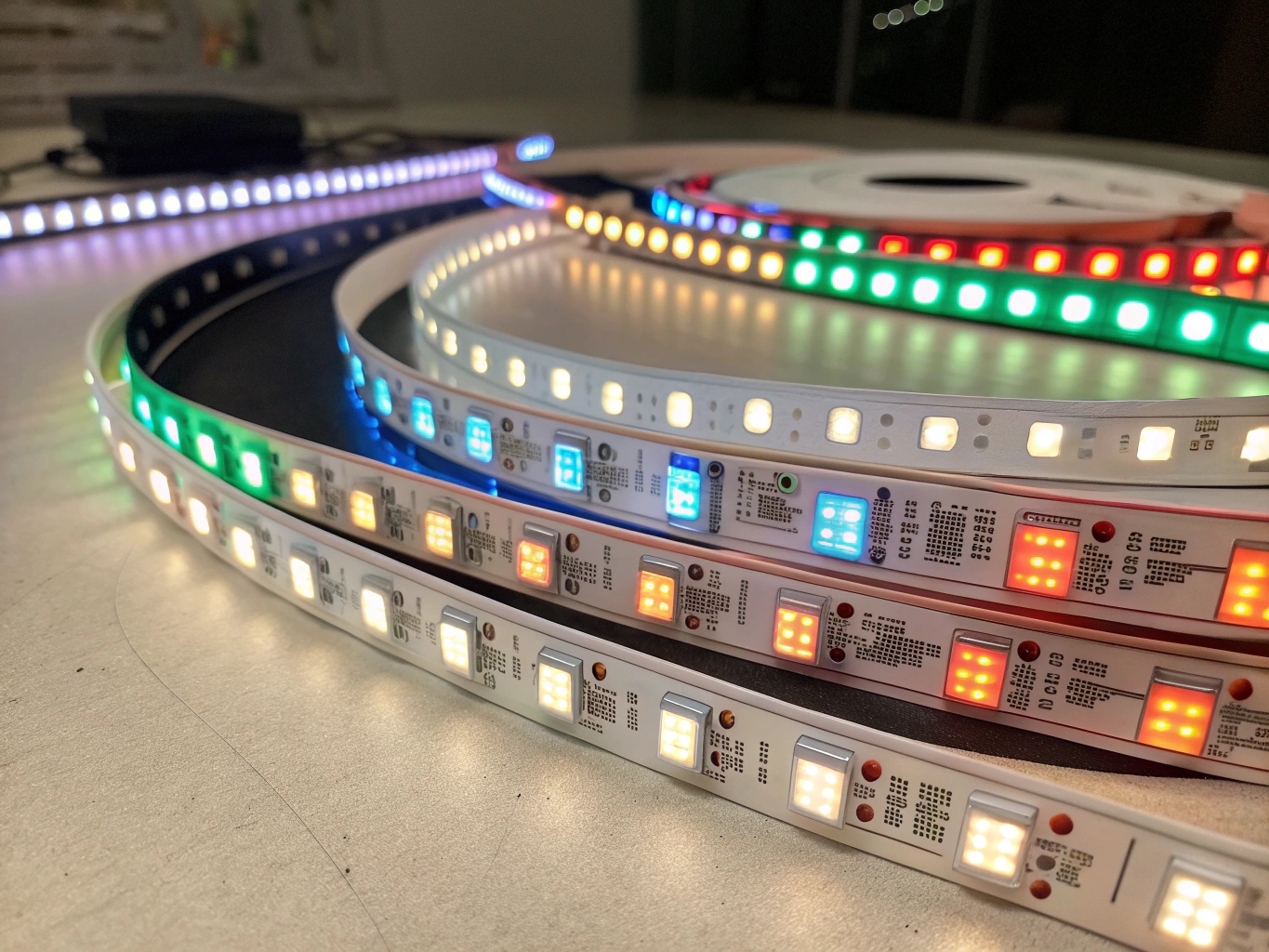
This is a very important distinction between the professional and consumer markets. RGBIC technology puts a small microchip (the "IC") in control of each LED or small group of LEDs. This allows for those mesmerizing "chasing" or "rainbow" effects along the length of a single strip. However, it's typically controlled by a proprietary remote or a smartphone app, not DMX. A professional RGBW wall washer works differently. It's designed to be a single, powerful light source. You control the entire fixture via DMX as one unit to create a smooth, homogenous wash of color. The professional equivalent of RGBIC is a "pixel-mappable batten5." These are linear fixtures where each LED or small section is a separate "pixel" with its own DMX address. This gives a lighting technician like Nick granular control using professional software, but it's a different tool used for video-style effects, not for creating a smooth, even wall wash.
Control Philosophy: RGBW vs. RGBIC
| Technology | Control Unit | Primary Use | Control Protocol |
|---|---|---|---|
| RGBW | The entire fixture. | Creating a single, even field of color. | DMX512 |
| RGBIC | Sections of a strip. | Creating multi-color chasing effects. | Proprietary / App-based |
Conclusion
An RGBW outdoor wall washer is an essential, versatile tool. It offers the creative freedom of full-color mixing combined with the vital function of a pure, brilliant white light.
-
Discover the impact of dynamic outdoor lighting on architecture and how it enhances visual appeal. ↩
-
Find out how high-quality RGBW fixtures can elevate your outdoor lighting design and creativity. ↩
-
Explore the importance of color temperature in creating the desired ambiance and mood in lighting. ↩
-
Find out how IP67-rated housings protect outdoor lighting fixtures from environmental elements. ↩
-
Discover the capabilities of pixel-mappable battens for creating intricate lighting effects. ↩
You may also be interested in:
